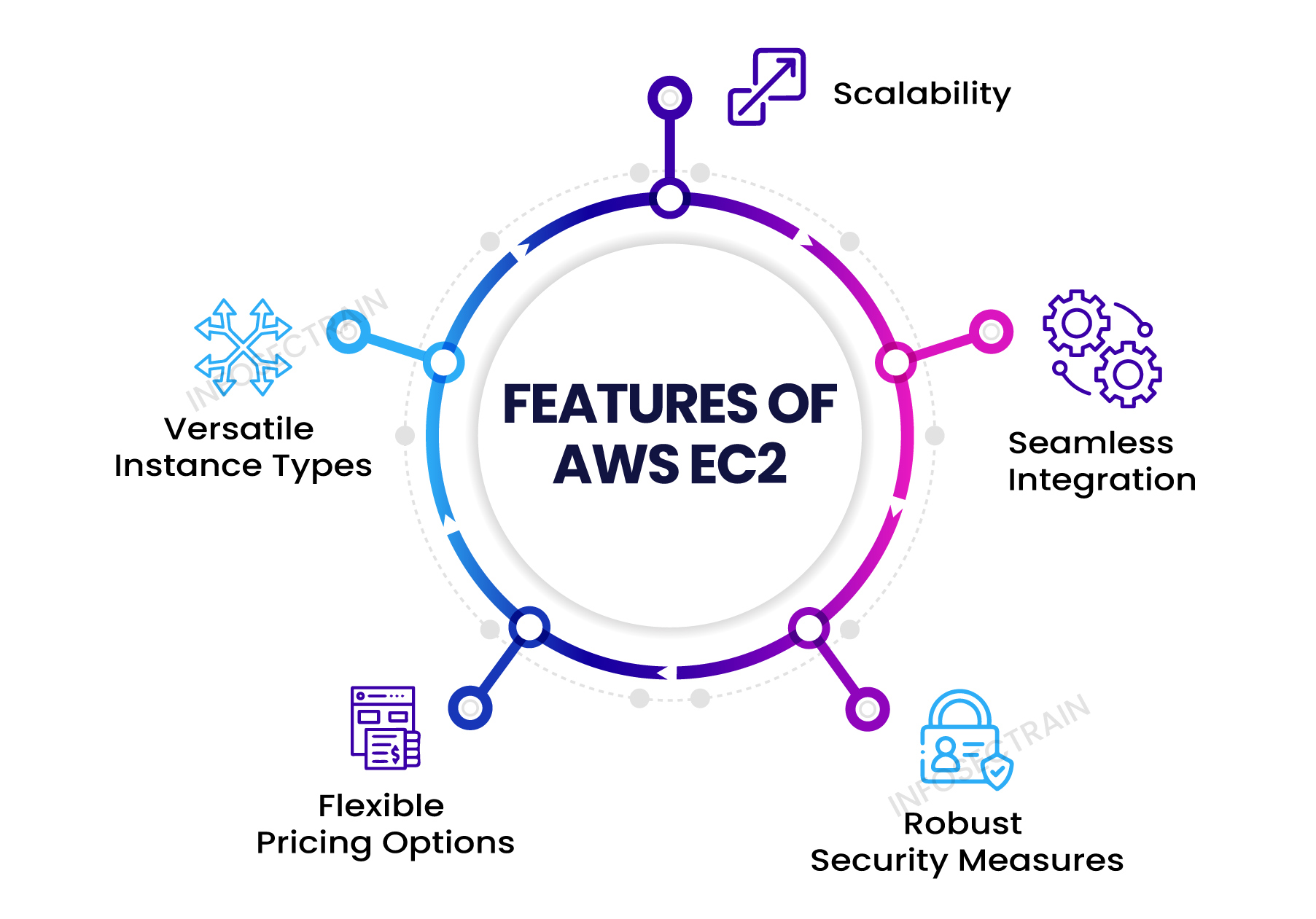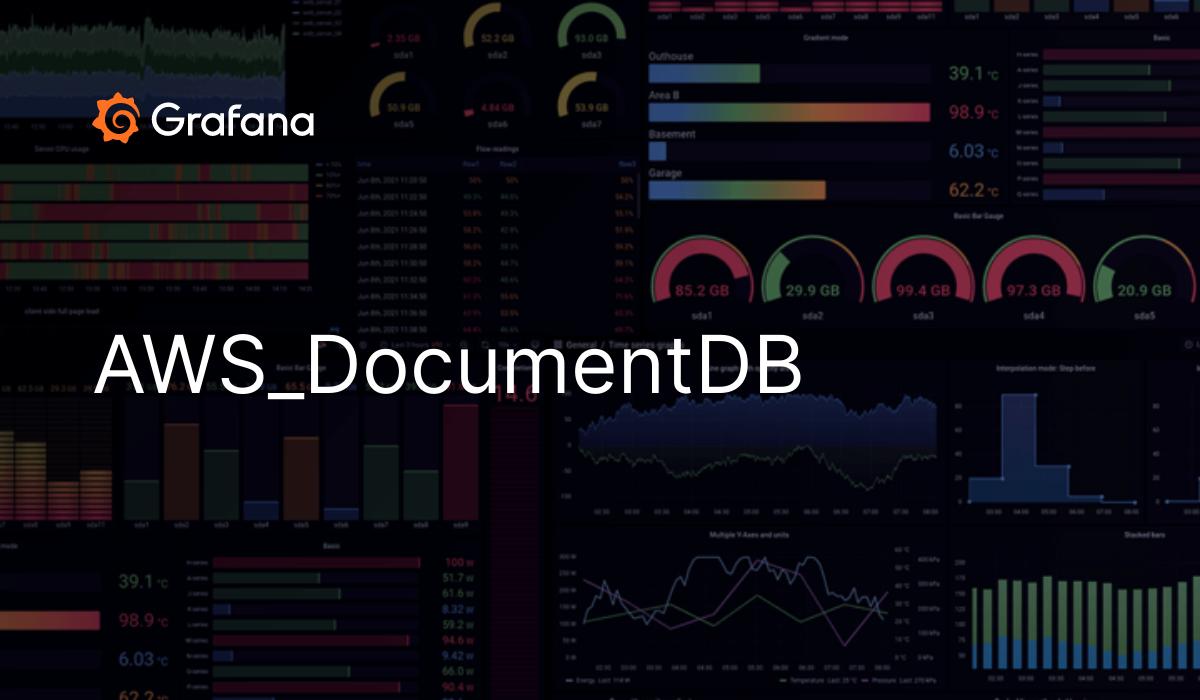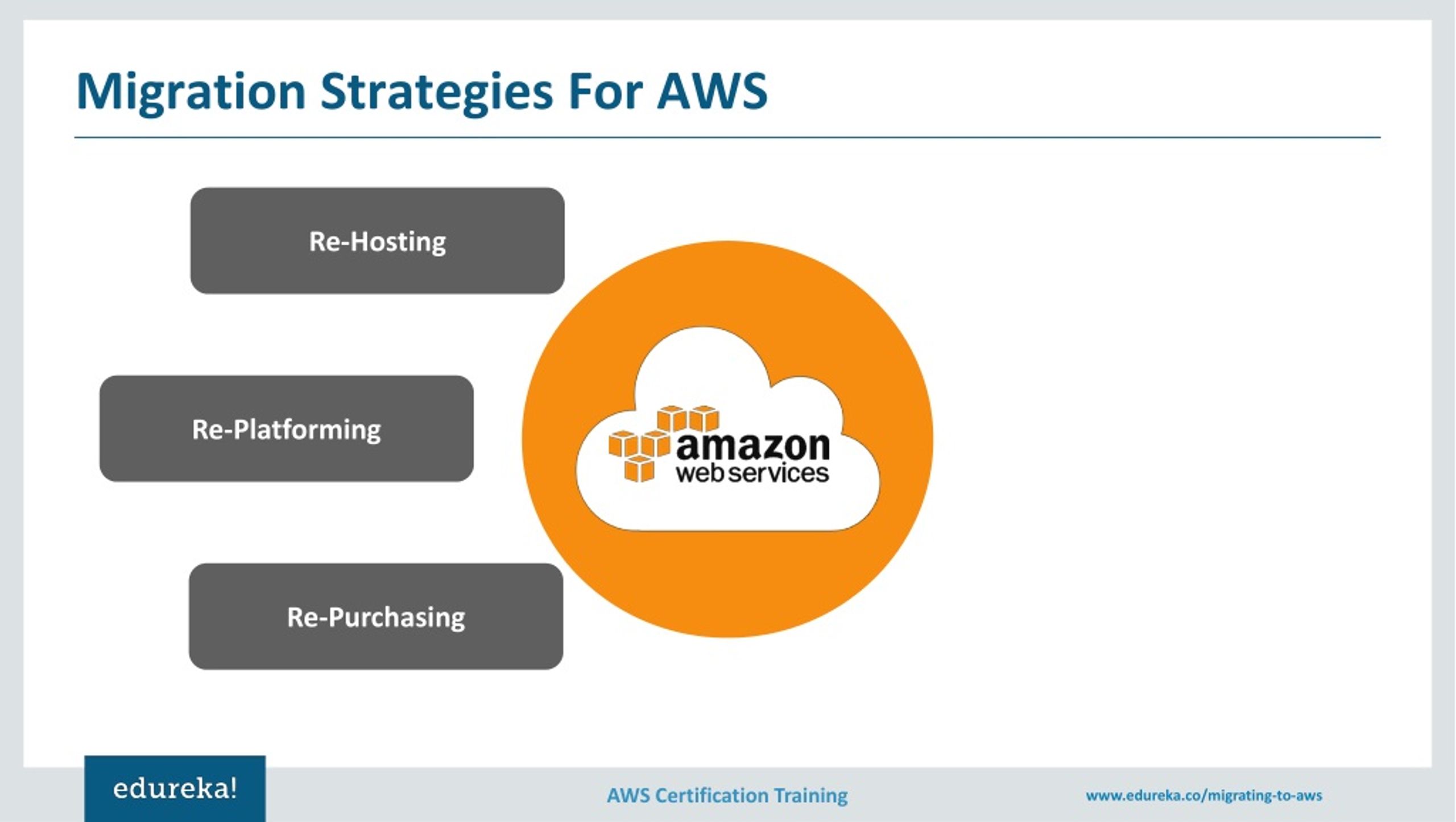What is AWS DocumentDB?
AWS DocumentDB is a managed database service provided by Amazon Web Services (AWS) that is designed to support scalable and high-performance applications. As a document database, AWS DocumentDB is compatible with MongoDB, a popular open-source NoSQL database, enabling developers to use familiar tools and APIs while benefiting from the added scalability, security, and reliability of AWS. AWS DocumentDB is built on a purpose-built, scalable, and distributed storage service that allows for high levels of performance and availability. It supports a wide range of use cases, including content management, mobile, web, and gaming applications, as well as real-time analytics and IoT devices.
The benefits of AWS DocumentDB extend beyond its compatibility with MongoDB and high performance. As a managed service, AWS DocumentDB simplifies database management tasks, such as setup, configuration, patching, and backups, allowing developers to focus on building and deploying applications. Additionally, AWS DocumentDB offers robust security features, including encryption at rest and in transit, VPC integration, and access control, ensuring that sensitive data remains protected.
In summary, AWS DocumentDB is a powerful and flexible managed database service that offers compatibility with MongoDB, high scalability, performance, and security. Its ease of use and robust features make it an attractive option for developers and businesses seeking to build and deploy applications that require a reliable and scalable database solution.
Key Features and Benefits of AWS DocumentDB
AWS DocumentDB offers a wide range of features and benefits that cater to various use cases, making it an attractive option for developers and businesses. Some of the essential features and advantages of AWS DocumentDB include: High Scalability: AWS DocumentDB is designed to scale seamlessly, allowing for high levels of performance and availability. It supports up to 64 TB of data and 15,000 read and 3,000 write IOPS per database instance, ensuring that applications can handle large amounts of data and traffic.
Performance: AWS DocumentDB offers high performance and low latency, enabling applications to retrieve and process data quickly. It uses a purpose-built, scalable, and distributed storage service that allows for high levels of performance and availability.
Security: AWS DocumentDB offers robust security features, including encryption at rest and in transit, VPC integration, and access control, ensuring that sensitive data remains protected.
Compatibility: AWS DocumentDB is compatible with MongoDB, enabling developers to use familiar tools and APIs while benefiting from the added scalability, security, and reliability of AWS.
Ease of Use: AWS DocumentDB simplifies database management tasks, such as setup, configuration, patching, and backups, allowing developers to focus on building and deploying applications.
Backup and Recovery: AWS DocumentDB offers point-in-time recovery, continuous backups, and automated backups, ensuring that data remains safe and secure.
Monitoring and Alerts: AWS DocumentDB offers monitoring and alerts, enabling developers to track performance metrics, diagnose issues, and receive notifications when problems arise.
Integration: AWS DocumentDB integrates with other AWS services, such as Amazon Elasticsearch, Amazon Kinesis Data Firehose, and AWS Lambda, enabling developers to build and deploy applications that leverage the power of AWS.
In summary, AWS DocumentDB offers a wide range of features and benefits that cater to various use cases, making it an attractive option for developers and businesses seeking to build and deploy applications that require a reliable and scalable database solution. Its compatibility with MongoDB, high scalability, performance, and security, combined with its ease of use and robust features, make it an attractive option for businesses and developers seeking to build and deploy applications that require a reliable and scalable database solution.
How to Get Started with AWS DocumentDB: A Step-by-Step Guide
Getting started with AWS DocumentDB is a straightforward process that involves a few simple steps. Here’s a step-by-step guide to help you get started: Step 1: Create an AWS Account
To get started with AWS DocumentDB, you need to create an AWS account. If you don’t already have one, you can sign up for a free account on the AWS website.
Step 2: Navigate to the AWS DocumentDB Console
Once you have created an AWS account, navigate to the AWS DocumentDB console. From there, you can create a new database instance.
Step 3: Create a Database Instance
To create a new database instance, click on the “Create database instance” button. You will be prompted to provide some basic information, such as the instance type, storage size, and network settings. Make sure to choose the right settings based on your specific use case.
Step 4: Connect to Your Database Instance
Once your database instance has been created, you can connect to it using a MongoDB client. AWS DocumentDB supports a wide range of MongoDB clients, including the MongoDB shell, MongoDB drivers, and third-party tools.
Step 5: Manage Your Data
With your database instance up and running, you can start managing your data. AWS DocumentDB supports a wide range of data management tasks, such as creating databases, collections, and documents, as well as querying and indexing data.
Step 6: Monitor Your Database Instance
To ensure that your database instance is running smoothly, you can monitor its performance using the AWS DocumentDB console. AWS DocumentDB provides a range of monitoring and alerting features, such as CloudWatch metrics and alarms, that enable you to track performance and diagnose issues.
In summary, getting started with AWS DocumentDB is a simple process that involves creating a database instance, connecting to it using a MongoDB client, managing your data, and monitoring its performance. With its high scalability, performance, and security, AWS DocumentDB is an attractive option for businesses and developers seeking to build and deploy applications that require a reliable and scalable database solution.
Real-World Applications and Success Stories of AWS DocumentDB
AWS DocumentDB has been used by a wide range of businesses and projects to achieve their goals and overcome challenges. Here are some inspiring examples of real-world applications and success stories of AWS DocumentDB: Example 1: Social Media Platform
A social media platform used AWS DocumentDB to manage user data, including profiles, posts, and comments. By using AWS DocumentDB, the platform was able to achieve high scalability, performance, and security, enabling it to handle large amounts of data and traffic.
Example 2: E-commerce Website
An e-commerce website used AWS DocumentDB to manage product catalogs, orders, and customer data. By using AWS DocumentDB, the website was able to achieve high availability, fault tolerance, and disaster recovery, ensuring that its data remained safe and secure.
Example 3: Gaming Company
A gaming company used AWS DocumentDB to manage game data, including player profiles, game states, and leaderboards. By using AWS DocumentDB, the company was able to achieve high performance, low latency, and scalability, enabling it to handle large amounts of data and traffic.
Example 4: Healthcare Provider
A healthcare provider used AWS DocumentDB to manage patient data, including medical records, appointment schedules, and billing information. By using AWS DocumentDB, the provider was able to achieve high security, compliance, and data protection, ensuring that patient data remained safe and secure.
In summary, AWS DocumentDB has been used by a wide range of businesses and projects to achieve their goals and overcome challenges. Its high scalability, performance, and security, combined with its ease of use and robust features, make it an attractive option for businesses and developers seeking to build and deploy applications that require a reliable and scalable database solution. Whether you’re building a social media platform, an e-commerce website, a gaming application, or a healthcare system, AWS DocumentDB can help you unleash the power of your data and achieve your goals.
Best Practices for AWS DocumentDB: Optimizing Performance and Security
AWS DocumentDB is a powerful and flexible managed database service that offers many benefits for developers and businesses. To maximize the potential of AWS DocumentDB, it’s essential to follow best practices for performance tuning, data protection, and backup strategies. Here are some expert recommendations for optimizing the performance and security of your AWS DocumentDB instance: Performance Tuning:
1. Use the Right Instance Type: AWS DocumentDB offers a range of instance types with different performance characteristics. Choose the right instance type based on your specific use case and workload.
2. Optimize Indexing: Indexing is critical for query performance in AWS DocumentDB. Make sure to create appropriate indexes for your queries and monitor their usage to ensure they’re being used efficiently.
3. Use Connection Pools: Connection pooling can help improve the performance of your application by reducing the overhead of establishing and tearing down connections.
4. Monitor Performance Metrics: AWS DocumentDB provides a range of performance metrics, such as CPU utilization, memory usage, and I/O activity. Monitor these metrics regularly to identify performance bottlenecks and optimize your workload.
Data Protection:
5. Enable Encryption at Rest: AWS DocumentDB supports encryption at rest, which helps protect your data from unauthorized access. Enable encryption at rest to ensure your data is secure.
6. Use VPC Security Groups: VPC security groups allow you to control access to your AWS DocumentDB instance. Use security groups to restrict access to your instance and protect your data.
7. Enable Backup and Restore: AWS DocumentDB provides backup and restore functionality, which enables you to recover your data in case of data loss or corruption. Enable backup and restore to ensure your data is protected.
Backup Strategies:
8. Schedule Regular Backups: AWS DocumentDB allows you to schedule regular backups, which helps ensure your data is always up-to-date. Schedule regular backups to protect your data.
9. Use Point-in-Time Recovery: AWS DocumentDB supports point-in-time recovery, which enables you to recover your data to a specific point in time. Use point-in-time recovery to protect your data from accidental deletion or corruption.
10. Test Your Backups: Test your backups regularly to ensure they’re working as expected. Testing your backups helps ensure you can recover your data in case of a disaster.
In summary, AWS DocumentDB is a powerful and flexible managed database service that offers many benefits for developers and businesses. To maximize the potential of AWS DocumentDB, it’s essential to follow best practices for performance tuning, data protection, and backup strategies. By following these best practices, you can ensure your AWS DocumentDB instance is optimized for performance, secure, and protected against data loss or corruption.
Comparing AWS DocumentDB with Other Managed Database Services
When it comes to managed database services, there are several options available in the market, including AWS DocumentDB, Amazon DynamoDB, Amazon Aurora, and Google Cloud Firestore. Each of these services has its unique features, advantages, and use cases. In this article, we will compare AWS DocumentDB with other managed database services to help potential users make informed decisions. AWS DocumentDB vs. Amazon DynamoDB:
Amazon DynamoDB is a NoSQL database service that offers high performance, scalability, and flexibility. While AWS DocumentDB is also a NoSQL database service, it is designed for document databases and is compatible with MongoDB. If you’re looking for a managed database service for document databases, AWS DocumentDB is a better choice. However, if you need a managed database service for key-value or wide-column databases, Amazon DynamoDB is a better option.
AWS DocumentDB vs. Amazon Aurora:
Amazon Aurora is a relational database service that offers high performance, scalability, and availability. While AWS DocumentDB is a NoSQL database service, Amazon Aurora is a relational database service. If you’re looking for a managed database service for relational databases, Amazon Aurora is a better choice. However, if you need a managed database service for document databases, AWS DocumentDB is a better option.
AWS DocumentDB vs. Google Cloud Firestore:
Google Cloud Firestore is a NoSQL document database service that offers high performance, scalability, and flexibility. While AWS DocumentDB is also a NoSQL document database service, it is designed for MongoDB workloads. If you’re looking for a managed database service for MongoDB workloads, AWS DocumentDB is a better choice. However, if you need a managed database service for general-purpose document databases, Google Cloud Firestore is a better option.
In summary, when comparing AWS DocumentDB with other managed database services, it’s essential to consider your specific use case and workload. AWS DocumentDB is a better choice for MongoDB workloads, while Amazon DynamoDB, Amazon Aurora, and Google Cloud Firestore are better options for other use cases and workloads. By understanding the differences and similarities between these services, you can make an informed decision and choose the right managed database service for your needs.
Staying Up-to-Date with AWS DocumentDB: News, Updates, and Resources
AWS DocumentDB is a powerful and flexible managed database service that offers many benefits for developers and businesses. To stay up-to-date with AWS DocumentDB, it’s essential to follow news, updates, and resources related to the service. Here are some curated resources for staying informed about AWS DocumentDB: 1. AWS DocumentDB Official Documentation: The official documentation for AWS DocumentDB is a comprehensive resource that provides detailed information about the service, including getting started guides, API references, and best practices.
2. AWS DocumentDB Blog: The AWS DocumentDB blog is a great resource for staying up-to-date with the latest news, updates, and features of the service. The blog covers a wide range of topics, including performance tuning, security, and use cases.
3. AWS DocumentDB Forum: The AWS DocumentDB forum is a community-driven platform where users can ask questions, share experiences, and provide feedback about the service. The forum is a great resource for troubleshooting issues, learning from other users, and staying informed about the service.
4. AWS DocumentDB GitHub Repository: The AWS DocumentDB GitHub repository is a community-driven project that provides sample code, tools, and utilities for AWS DocumentDB. The repository is a great resource for developers who want to learn more about AWS DocumentDB and how to use it in their applications.
5. AWS DocumentDB Webinars and Tutorials: AWS provides a range of webinars and tutorials for AWS DocumentDB, covering topics such as getting started, performance tuning, and best practices. These resources are a great way to learn more about AWS DocumentDB and how to use it effectively.
6. AWS DocumentDB Roadmap: AWS provides a public roadmap for AWS DocumentDB, which outlines the future plans and developments for the service. The roadmap is a great resource for staying informed about the future of AWS DocumentDB and how it will evolve.
In summary, staying up-to-date with AWS DocumentDB is essential for developers and businesses who want to maximize the potential of the service. By following the official documentation, blog, forum, GitHub repository, webinars, and tutorials, you can stay informed about the latest news, updates, and features of AWS DocumentDB. Additionally, by following the public roadmap, you can stay ahead of the curve and plan for the future of the service.
Migrating to AWS DocumentDB: Strategies and Considerations
Migrating from a self-managed MongoDB instance to AWS DocumentDB can be a complex and time-consuming process. However, with the right strategies and considerations, you can ensure a smooth and successful transition. Here are some essential steps and factors to consider when migrating to AWS DocumentDB: 1. Assess Your Current Infrastructure: Before migrating to AWS DocumentDB, it’s essential to assess your current infrastructure and identify any dependencies or customizations that may affect the migration process. This includes reviewing your data schema, indexing strategies, and application code.
2. Choose the Right Migration Tool: AWS provides several migration tools for migrating data to AWS DocumentDB, including the AWS Database Migration Service (DMS), AWS Schema Conversion Tool (SCT), and AWS Data Pipeline. Choosing the right migration tool depends on your specific use case and requirements.
3. Test Your Migration: Before migrating your production data, it’s essential to test your migration in a staging environment. This allows you to identify and address any issues or inconsistencies that may arise during the migration process.
4. Monitor Your Migration: During the migration process, it’s essential to monitor your database performance and identify any performance bottlenecks or issues. AWS provides several monitoring and logging tools, including Amazon CloudWatch and AWS CloudTrail.
5. Optimize Your Data Schema: After migrating to AWS DocumentDB, it’s essential to optimize your data schema for the new environment. This includes reviewing your indexing strategies, data partitioning, and sharding strategies.
6. Update Your Application Code: After migrating to AWS DocumentDB, you may need to update your application code to take advantage of the new features and capabilities of the service. This includes updating your database connection settings, query strategies, and data access patterns.
7. Implement Data Protection and Backup Strategies: After migrating to AWS DocumentDB, it’s essential to implement data protection and backup strategies to ensure the availability and durability of your data. AWS provides several data protection and backup tools, including AWS Backup, AWS Snapshot Manager, and AWS Key Management Service (KMS).
In summary, migrating to AWS DocumentDB requires careful planning, assessment, and execution. By following these essential steps and considerations, you can ensure a smooth and successful transition to AWS DocumentDB and take advantage of its powerful features and capabilities.







